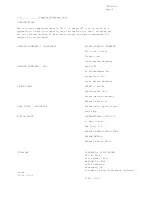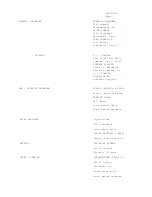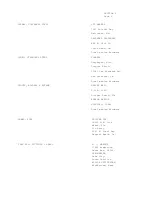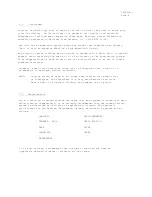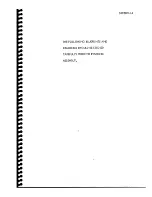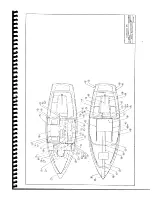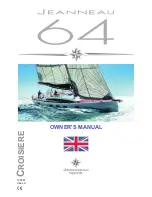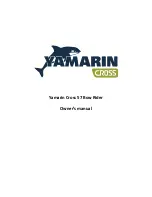
SECTION 3
Page 3
3.3
(Continued)
b)
All gel coat should be sanded off.
c)
Sanding should be done with coarse paper (min. 40
grit).
d)
Bonding strips should extend a minimum of 4" on either
side of the bond. This means that if there is a space or
a filler between the two surfaces, glass strips wider
than 10" will be required.
e)
Bond laminates should consist of the following
on all boats:
1.
4 ozs mat under 24 oz woven
roving 10" wide, covered by
7-1/2 oz. cloth 12" wide on
all bulkheads, around the
forward water tank, at the
aft end of the hull liner where
bunks and shelves contact the
hull. '
2.
All other bonds should consist of 3 oz.
mat plus one layer of 7-1/2 oz. cloth.
f)
No more than 2% catalyst by volume should be used in the
resin mixture.
Excellent material used in boat construction that will bond well are marine
plywood, exterior plywood, most hardwoods, and hardened plywoods. Solid
teak is an exception as it is a very oily wood which is incompatible with
the resin. To bond teak plywood the teak outer surface must be removed to
the fir core for 4" from the edge.
Should you decide to lay out your own interior and not use the hull liner
(or modify the hull liner) you will have to bond all bulkheads, cabinets,
and floor boards to the hull.
3.4
Cutting, Drilling, and Grinding
Polyester resin fiberglass is a quite hard and very durable material for
the construction of sailboats. When grinding,
Summary of Contents for Coronado 25
Page 1: ......
Page 21: ......
Page 22: ......
Page 23: ......
Page 24: ......
Page 25: ......
Page 26: ......
Page 27: ......
Page 28: ......
Page 29: ......
Page 30: ......
Page 31: ......
Page 32: ......
Page 33: ......
Page 34: ......
Page 35: ......
Page 36: ......
Page 37: ......
Page 38: ......
Page 39: ......
Page 40: ......
Page 41: ......
Page 42: ......
Page 43: ......
Page 44: ......
Page 45: ......






